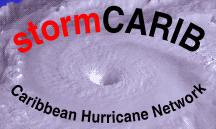News Release
Department of Communication (DCOMM), Ennia Bldg., Longwall Rd., Philipsburg, Sint Maarten D.W.I. Tel. 00-599-543-1162, 542-4119, Fax: 543-1169; Email: gis at sintmaarten.net;
For Immediate Release: Wednesday, March 23, 2011/N065
Tsunami workshop exercise a success; early warning key to saving lives
GREAT BAY, Sint Maarten (DCOMM) – Section Head of Disaster Management Paul Martens described the workshop that brought together the 10-Emergency Support Functions (ESFs) of the Emergency Operations Center (EOC) to carry out a Caribbean-wide earthquake/tsunami exercise, as a success and will lead to the development of a national tsunami response plan for the country.
The exercise was based on a 7.6 magnitude earthquake near the U.S. Virgin Islands that triggered a 2.5 meter high tsunami.
Also attending the earthquake/tsunami scenario that took place in the conference room of the Fire & Ambulance Dept. in Cay Hill was Minister of Public Health, Social Development and Labour Cornelius de Weever and Emilia Thomas from the Cabinet of the Prime Minister. The EOC meeting was chaired by National Disaster Coordinator Fire Chief Winston Salomon.
The scenario was based on a 2.5 meter tsunami striking the airport and the village of Simpson Bay.
During the table top exercise, communicating the tsunami warning information to the Fire Department and Police quickly was key in order for them to be mobilized to direct traffic in order to prevent traffic jams and for the effective evacuation of the area to be impacted by a tsunami.
The ESFs were informed that a tsunami wave effect model is being created for the island with the assistance of UNESCO-IHE and the R3I project. The model is seen as a critical component that would benefit disaster prevention and preparedness.
Another essential point was that the island needs its own Meteorological Office that would issue the warning rather than depending on the Curacao Meteo Service.
Evacuation of residents along the coast and low lying areas inland was discussed extensively. Such an evacuation process would have to be done in an orderly manner and designated safe areas would have to be determined.
Early warning of coastal communities would be done via the disaster office sirens, emergency service vehicles, radio stations, SMS text messages, and email linked to blackberry services. The message would be multi-language, clear and instructive.
A public awareness tsunami campaign is the foundation for having the population prepared and also knowing exactly what action they would have to take once a tsunami warning has been issued by the authorities.
Other major points of discussion were the evacuation of the airport, how to deal with cruise ships in the harbour, the evacuation of hotels and schools. Further study is required with respect to the aforementioned, and the Ministry of Housing, Spatial Planning, Environment and Infrastructure (VROMI) and the Police are busy developing a new evacuation plan for certain areas of the island. A tsunami scenario will also be included in this plan.
Cooperation with the North side of the island was seen as essential during a disaster situation and a tsunami in particular.
The workshop was based on a United Nations Educational, Scientific, and Cultural Organizations (UNESCO) Intergovernmental Oceanographic Commission (IOC), earthquake/tsunami exercise.
The goal of the exercise was to test the Tsunami and other Coastal Hazards Warning System for the Caribbean and Adjacent Regions, which was established in 2005 by the countries of the region in collaboration with UNESCO and IOC.
The region-wide tsunami drill was referred to as “Exercise Caribe Wave 11/LANTEX.”
Over the last 500 years, 75 tsunamis have occurred in the Caribbean. This figure represents about 10 per cent of the entire number of oceanic tsunamis in the world during that period.
# # #
Roddy Heyliger (599-5204217, roddyheyliger at gmail.com)
Department of Communications (DCOMM), Sint Maarten
Best regards,
Roddy Heyliger - BB pin 21437DBE
P.O.Box 945, Philipsburg, St. Maarten
Cell: 5204217-primary, 5816323-secondary
Public Relations & Communications
Secondary Email:
roddyheyliger at yahoo.com
CONFIDENTIALITY NOTICE
This e-mail message is intended only for the individual(s) to whom it is
addressed. This e-mail may contain information that is privileged,
confidential and exempt from disclosure under applicable law. If you are not
the intended recipient, you are hereby notified that any dissemination,
distribution or copying of this communication is strictly prohibited. If you received this e-mail by accident, please notify the sender immediately and destroy this e-mail and all copies of it.

